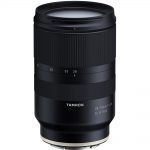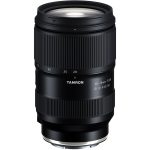Announced
Production status
Original name
System
Pros and cons
Genres or subjects of photography
Recommended slowest shutter speed when shooting static subjects handheld
Sigma 28-70mm F/2.8 DG DN | C
Standard zoom lens • Digital era
Abbreviations
| DG | The lens is designed for 35mm digital cameras but can be also used on APS-C digital cameras. |
| DN | The lens is optimized for cameras with a short flange back distance. |
| | C | Belongs to the Contemporary series lenses. |
Specification


| Optical design: | |
| 28mm - 70mm [2.5X zoom ratio] | |
| F/2.8 across the focal length range | |
| 35mm full frame | |
| Leica L | |
| Sony E | |
| 75.4° @ 28mm - 34.3° @ 70mm (35mm full frame) | |
| 16 elements in 12 groups | |
| 3 ASPH, 2 FLD, 2 SLD | |
| Internal focusing (IF) | |
| On Leica T/TL/CL APS-C [1.53x] cameras: | |
35mm equivalent focal length range: | 42.8mm - 107.1mm (in terms of field of view) |
35mm equivalent speed range: | F/4.3 (in terms of depth of field) |
Diagonal angle of view: | 53.6° @ 28mm - 22.8° @ 70mm |
| On Sony NEX/a/ZV APS-C [1.53x] cameras: | |
35mm equivalent focal length range: | 42.8mm - 107.1mm (in terms of field of view) |
35mm equivalent speed range: | F/4.3 (in terms of depth of field) |
Diagonal angle of view: | 53.6° @ 28mm - 22.8° @ 70mm |
| Diaphragm mechanism: | |
Diaphragm type: | Automatic |
Aperture control: | None; the aperture is controlled from the camera |
| 9 (nine) | |
| Zooming: | |
Zoom mechanism: | Manual |
Zoom control: | Zoom ring |
Zoom type: | Rotary |
Zooming method: | Extends while zooming |
| Focusing: | |
| 0.19m @ 28mm | |
| 0.38m @ 70mm | |
| 1:3.3 @ 28mm | |
| 1:4.6 @ 70mm | |
Focusing modes: | Autofocus, manual focus |
Autofocus motor: | Stepping motor |
Manual focus control: | Focusing ring |
Focus mode selector: | AF - MF |
Manual focus override in autofocus mode: | Determined by the camera |
| Optical Stabilizer (OS): | |
| - | |
| Physical characteristics: | |
| 470g (Leica L) | |
| 470g (Sony E) | |
| ⌀72.2×101.5mm (Leica L) | |
| ⌀72.2×103.5mm (Sony E) | |
| Water-resistant mount | |
| Yes | |
| Accessories: | |
| Screw-type 67mm | |
| LH706-01 - Bayonet-type petal-shaped | |
| Not compatible |
Source of data
- Manufacturer's technical data.
Manufacturer description
The SIGMA 28-70mm F2.8 DG DN | Contemporary redefines the standard zoom for mirrorless cameras by combining outstanding optical performance, an F2.8 constant aperture, and a lightweight and compact body. The design of the 28-70mm F2.8 DG DN | Contemporary is based on the existing 24-70mm F2.8 DG DN | Art, but with a focal range starting at 28mm, making the lens body significantly smaller and lighter while maintaining superb optical performance. It is the smallest and lightest lens in its class*. Remaining true to the Contemporary line’s core concept of maintaining an optimal balance between optical performance and lens size, this new optic delivers professional quality results in a body small enough to take on a casual outing.
In addition to prioritizing portability, SIGMA’s optical engineers introduced a new combination of coatings and structural elements that make this standard zoom well-equipped for use in a wide range of shooting environments. Likewise, the latest production and manufacturing techniques were employed to ensure exceptionally high build quality.
The 28-70mm F2.8 DG DN | Contemporary introduces another fast, high-performance, large-aperture zoom lens to SIGMA’s mirrorless line-up, offering a more compact alternative to the existing 24-70mm F2.8 DG DN | Art.
The optical design of the SIGMA 28-70mm F2.8 DG DN | Contemporary is based on the 24-70mm F2.8 DG DN | Art, which is renowned for its outstanding optical performance throughout its zoom range. True to the Contemporary line’s core concept, the 28-70mm F2.8 DG DN | Contemporary was developed to offer the right balance of performance and portability, and as such, this large-aperture standard zoom delivers outstanding image quality that rivals Art line lenses in a body light enough for day-to-day use. Building on state-of-the-art technology, the 28-70mm F2.8 DG DN | Contemporary has an advanced optical design that includes three aspherical, two FLD, and two SLD elements. Despite using fewer elements in total than the 24-70mm F2.8 DG DN | Art, the design results in a thorough correction of axial chromatic aberration and sagittal coma aberration, which cannot be corrected in-camera, allowing users to create images that are uniformly sharp from the center to the edges of the frame. Along with its anti-ghosting design, the use of Super Multi-Layer Coating and Nano Porous Coating means well-controlled flare for high-contrast results in backlit conditions. It also features a water and oil repellant coating on the front side of the lens.
In short, the SIGMA 28-70mm F2.8 DG DN | Contemporary combines all of the key optical features required of a large-aperture standard zoom lens, which are essential for photographing a wide variety of subjects in a range of shooting conditions.
With the addition of the new 28-70mm F2.8 DG DN | Contemporary, SIGMA now provides two optimal solutions of standard F2.8 zoom lens for mirrorless cameras ― the new 28-70mm F2.8 DG DN | Contemporary achieves remarkable portability and offers the same optical performance, as the existing 24-70mm F2.8 DG DN | Art which is for pro-use with the highest levels of performance throughout its focal range.
Being slightly less wide-angle than the 24-70mm F2.8 DG DN | Art has allowed a significant reduction in the size of the 28-70mm F2.8 DG DN | Contemporary lens body. In order to fit with the design concept of the Contemporary line, which balances performance with portability, the new lens features a simpler dust- and splash-proof structure and smaller switches. This makes it the smallest and lightest lens in its class*.
The new lens features just one lightweight focusing element, which keeps the AF unit small. This, along with a quiet and fast stepping motor, makes for responsive and near-silent autofocus performance. The 28-70mm F2.8 DG DN | Contemporary weighs in at 470g, and when attached to the SIGMA fp, the entire setup is 890g. The supreme portability afforded by a camera system that weighs less than 1kg gives photographers a huge amount of freedom and flexibility to achieve their creative vision. It’s also a perfect combination for filmmakers looking for a high-performance, lightweight, easy-to-handle camera system that works well with a gimbal and other accessories.
A large-aperture, standard zoom lens that is light and small enough for casual outings, the 28-70mm F2.8 DG DN | Contemporary will open up new photographic possibilities for better and more creative results.
With priority given to optimal portability, the body of the SIGMA 28-70mm F2.8 DG DN | Contemporary consists primarily of lightweight parts. While conventional wisdom states that it is more difficult to ensure processing accuracy for plastic parts than metal parts, there has been no compromise whatsoever on build quality for the 28-70mm F2.8 DG DN | Contemporary. One reason for this is that it uses a type of polycarbonate called TSC (Thermally Stable Composite), which has a comparable level of thermal shrinkage to aluminum. This helps reduce differences between the thermal shrinkage of the metal and non-metal parts, ensuring stable levels of performance even in an environment with extreme temperature changes. The use of polycarbonates in the construction of zoom and focus rings can make their operation feel less premium, but with careful treatment to the precision of these parts and adjusting the movement with the lubricant appropriately, the rings offer a precise action with an exceptionally high-quality feel. What allows us to achieve these precisely produced parts and such premium aesthetics is the impressive standard of manufacturing technology and rigorous quality control we have at the SIGMA Aizu Factory. The SIGMA 28-70mm F2.8 DG DN | Contemporary offers a new and improved photographic experience for mirrorless users who require a fast aperture standard zoom lens. Its premium, intuitive build makes it as exciting to use the lens as it is to see the incredible images it can produce, inspiring you to start achieving your creative potential.
From the editor
The narrower the focal length range, the more compact and lightweight zoom lenses with simpler optical design can be developed. Guided by this approach, Sigma released the 28-70/2.8 model, which, although it does not offer the same wide field of view as the 24-70/2.8 models, weighs almost 2 times less and retains the speed of 2.8 throughout the entire focal length range. On the other hand, even the field of view of 24-70 models is often insufficient for capturing vast landscapes, cramped interiors, tall/wide buildings, and with the 28-70/2.8 lens, shooting such subjects becomes even more problematic - especially in cases when it is not possible to increase the focusing distance for some reasons. Besides, this Sigma lens is not an obvious choice for owners of Sony E-mount cameras, as it has a strong competitor in the form of the Tamron 28-75/2.8 lens with its larger telephoto range and water-resistant barrel.
In general, the release of this model is rather unjustified in our opinion. However, on the other hand, the fiercer the competition among lens manufacturers and the wider the choice, the more enthusiasts will ultimately benefit from this.
Compared to other standard zoom lenses in the Leica L system
- Not weather sealed
- Smallest filter size (67mm), along with the Lumix S 20-60/3.5-5.6
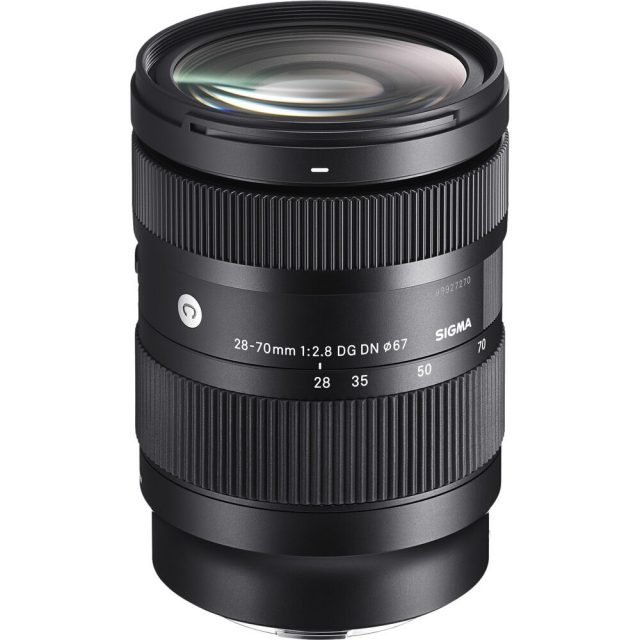
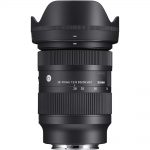
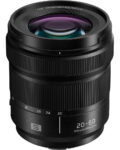
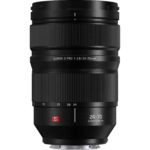
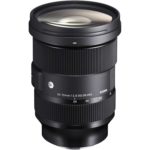
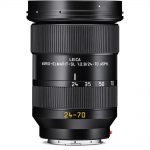
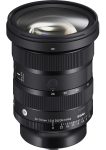
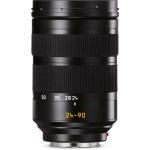
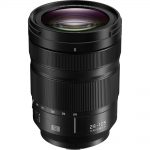


![Sony FE 28-70mm F/3.5-5.6 OSS [SEL2870]](https://lens-db.com/wp-content/uploads/2013/10/SEL2870-112x150.jpg)
![Sony FE Carl Zeiss Vario-Tessar T* 24-70mm F/4 ZA OSS [SEL2470Z]](https://lens-db.com/wp-content/uploads/2013/10/SEL2470Z-112x150.jpg)
![Sony FE 24-70mm F/2.8 GM [SEL2470GM]](https://lens-db.com/wp-content/uploads/2016/02/1454514369000_IMG_582668-150x150.jpg)
![Sony FE 24-70mm F/2.8 GM II [SEL2470GM2]](https://lens-db.com/wp-content/uploads/2022/04/1651055728_1702384-108x150.jpg)
